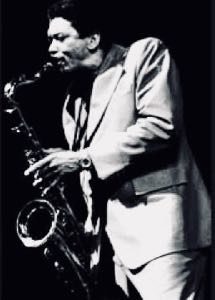 Although not quite a household name, Lee Allen was, and is very well-known to many music fans young and old. Mainly because of his work in the recording studio and on stage with some of the biggest names of rock and roll of his time; Little Richard and Fats Domino to name a couple.
Although not quite a household name, Lee Allen was, and is very well-known to many music fans young and old. Mainly because of his work in the recording studio and on stage with some of the biggest names of rock and roll of his time; Little Richard and Fats Domino to name a couple.
Later in his career in the 80’s and 90’s he also worked with young rockabilly/blues bands such as The Blasters and Stray Cats.
Lee Allen also stood out from other sax players of the day because of his own solo recordings under his own name. A while back I transcribed his version of “Hot Rod Special” and now this one called “Tic Toc“.
Download the Tic Toc Sheet Music and Follow Along With the Video Lesson Below
There is no better way to really learn how to solo than from copying really good players. Even the greatest players to ever live copied from their idols while they were on their way up.
So after you check out this tune get ready to dig in and learn a few of these very cool licks. You’ll be a step ahead with the fully transcribed music chart.
Make sure you have the music charts and follow along…
Go here to download the music and backing track if you haven’t done so already. If you have then it’s time to dig in!
Check out the right blues scale for your sax below. Later learn the other two that are shown and eventually learn them all!
C Blues Scale

D Blues Scale

A Blues Scale

Transcript of the video
When I started analyzing this tune I was really quite impressed with how creative and artful Lee Allen was at just playing with a blues scale. It really isn’t just a song or a’ tune like what were familiar with but just five or six choruses of him soloing over a really cool and swinging rock beat.
This is a piece of music that is arranged in 12 bar choruses. So the first bar of the 12 bar starts at the third bar off the top, the first full bar of music you see there. If you count 12 bars from that double line, then you see another double line. From that double line if you count 12 bars you’ll come into another double so this let’s us know it’s the beginning of another 12 bar chorus.
These can be interesting to analyze because it’s the beginning of another one so the pick-up, what he does in the pick-up leading up to it and what note he lands on can be interesting and can tell us valuable things about what notes he’s using and how he’s using them and why.
This tune is in the concert key of C. So i you’re looking at the Bb sax you’re obviously in D. The Eb chart is obviously in A. Rhythmically, I’m not going to get into too much of this because really it’s just quarter notes and eighth notes and the odd group of triplets which at this level and where most to you I think are at your pretty well hip to this kind of Rhythm.
We’re a little bit swinging. It’s not a full swing like some of the other stuff we’ve done here. It’s almost straight. The thing about this tune, if you listen to the backing track, which you should maybe study it a bit. Listen to the instruments. This was early rock and roll and the reason they call this music was called rock and roll in the beginning is because some instruments were actually rocking and others were rolling. Some instruments had the swinging beat going and others are playing straight eights which is the rocking feel. So they’re doing this together. If you listen to this backing track you’ll hear the drums are swinging a bit and the guitar is playing straight eights.
You can hear a lot of this in late 40’s, early 50’s rock and roll. Even some of the Elvis stuff. You know, by the time the 60’s came along we had lost that feel already. People were rocking but they weren’t rolling anymore. The name stayed the same but the music was approached differently.
So, when you’re reading the eight notes here it’s not the same as in a swing tune. It’s somewhere in between a steady eight’s feel and a normal swing feel.
Let’s look at the scale he’s using here. There’s the one, the two, the flat three, the three, the four, the sharp four, the five, the six, the flat 7.
The thing here is to get two or three solid ideas that are going to help you in your improvisational studies. The way I do it is listen to the song and find a lick or two that really get my attention. Then zero in on those licks and learn them. This song has a ton of licks here for you.
Even if you get two or three that you can call your own, by stealing them off lee Allen. This is fine. You can call them your own and over the days and weeks and months that you practice them, you’ll add your own twist to them.
A little trick I’ve done a lot is just pick a lick. Go to bar 46, 47, 48. We’re picking up, 48 picks up into 49 which is the beginning of a 12 bar chorus. It’s a cool lick and makes total sense if you look at the notes. Starts on the five of the scale. Then six five and then the flat seven. Then six, five, four, flat three, one.
Now think of those numbers and play them in another of your favorite keys. You should be able to do this if you know all your keys’ scales and chords. You must know this and start to transpose little licks like that in many other keys. That’s why people say it’s very important (it’s everything really) to learn all your scales and chords.
Another valuable thing to do when we’re analyzing a good saxophone player’s solo like this one is to see what he’s doing on certain chords. Look at bar 34. That chord is a four chord. So if you look at the notes coming down, the top note is the seventh of that chord, the second note is the fifth of that chord, the third note is the third of that chord. The fourth note is not part of that chord but is part of the next chord coming up and voila… he’s on the fifth note of the next chord which is the root. He focused on the chordal notes of the four chord.
On page two, the top line, last bar. It’s a five chord and look at what he plays there. On the tenor chart it’s the G, G sharp, A. The G is the seventh, the G sharp is a passing tone, to the A, which is the root of that seven chord.
Those aren’t the only notes you can play over a five chord but if you do stick to the chordal notes your chances are 100% that it’ll work. The trick is to figure out what to do from that note. The best way to learn is to study other people’s work. That’s what we’re doing here and I hope that helps.



Good stuff Johnny, thanks for the history lesson! Rock & Roll.
where do I start?